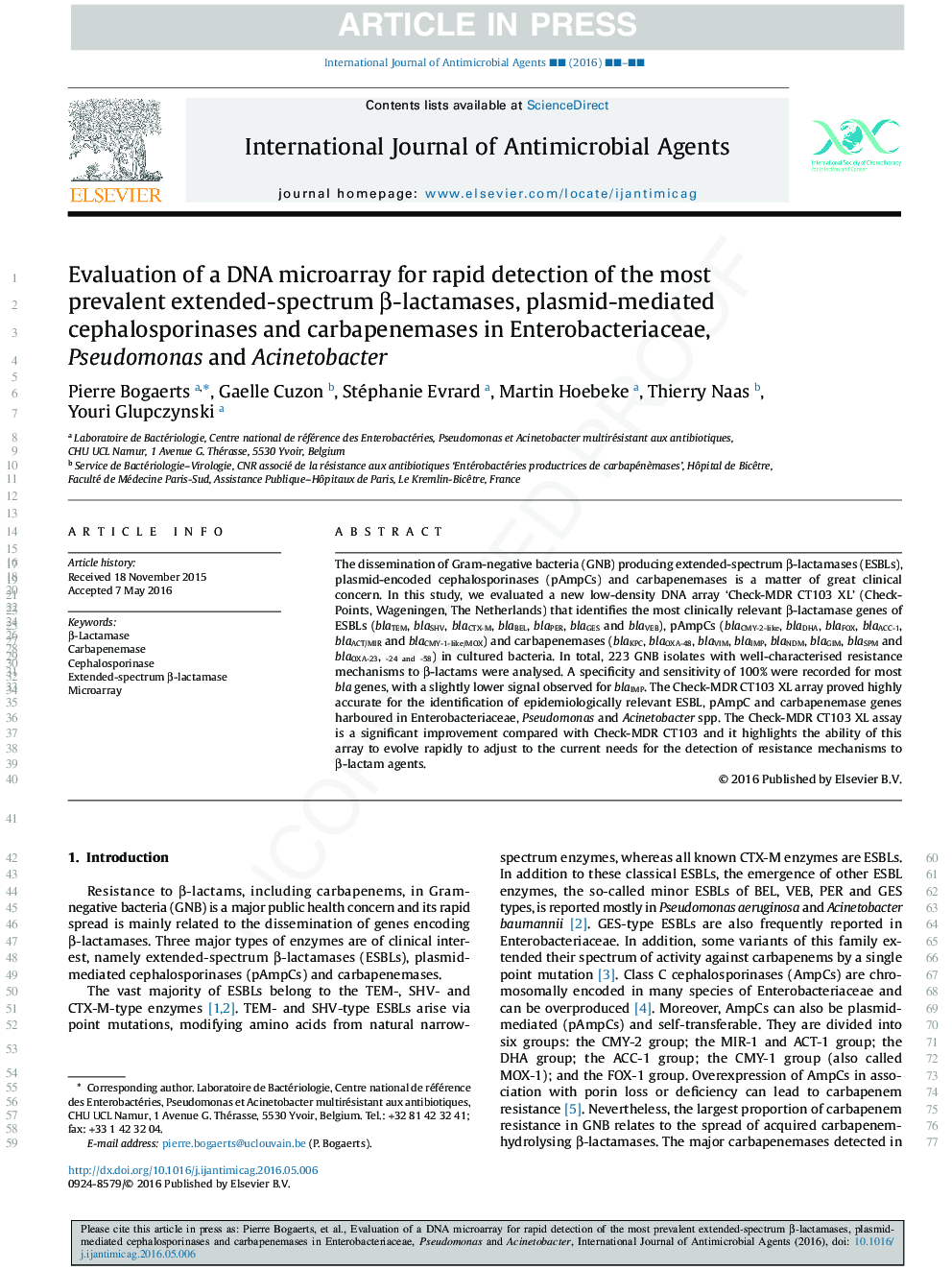| Article ID | Journal | Published Year | Pages | File Type |
|---|---|---|---|---|
| 6117613 | International Journal of Antimicrobial Agents | 2016 | 5 Pages |
Abstract
The dissemination of Gram-negative bacteria (GNB) producing extended-spectrum β-lactamases (ESBLs), plasmid-encoded cephalosporinases (pAmpCs) and carbapenemases is a matter of great clinical concern. In this study, we evaluated a new low-density DNA array 'Check-MDR CT103 XL' (Check-Points, Wageningen, The Netherlands) that identifies the most clinically relevant β-lactamase genes of ESBLs (blaTEM, blaSHV, blaCTX-M, blaBEL, blaPER, blaGES and blaVEB), pAmpCs (blaCMY-2-like, blaDHA, blaFOX, blaACC-1, blaACT/MIR and blaCMY-1-like/MOX) and carbapenemases (blaKPC, blaOXA-48, blaVIM, blaIMP, blaNDM, blaGIM, blaSPM and blaOXA-23, -24 and -58) in cultured bacteria. In total, 223 GNB isolates with well-characterised resistance mechanisms to β-lactams were analysed. A specificity and sensitivity of 100% were recorded for most bla genes, with a slightly lower signal observed for blaIMP. The Check-MDR CT103 XL array proved highly accurate for the identification of epidemiologically relevant ESBL, pAmpC and carbapenemase genes harboured in Enterobacteriaceae, Pseudomonas and Acinetobacter spp. The Check-MDR CT103 XL assay is a significant improvement compared with Check-MDR CT103 and it highlights the ability of this array to evolve rapidly to adjust to the current needs for the detection of resistance mechanisms to β-lactam agents.
Related Topics
Life Sciences
Immunology and Microbiology
Applied Microbiology and Biotechnology
Authors
Pierre Bogaerts, Gaelle Cuzon, Stéphanie Evrard, Martin Hoebeke, Thierry Naas, Youri Glupczynski,
